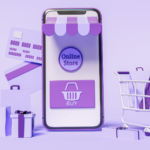
How to Choose the Best Social Media Platform for Your Business Marketing

In today’s digital age, social media has become an essential tool for businesses to connect with their customers, increase brand awareness, and drive sales. With 3.6 billion people using social media worldwide, businesses can no longer afford to ignore the potential of these platforms for growth. In this comprehensive guide, we will explore the right ways to identify the best social media platform for your business in 2023, from identifying your goals and target audience to choosing the right platforms and creating a winning social media strategy.
1. Identifying Your Business Goals and Target Audience
Before diving into the world of social media, it’s essential to identify your business goals and understand your target audience. may include increasing brand awareness, driving website traffic, generating leads, or boosting sales. Understanding your target audience will help you create content that resonates with them and choose the right platforms to reach them effectively.
Also, being aware of your target audience is very important for choosing the right platform. You need to consider the factors such as age, gender, location, interests, plus online behavior. This kind of information will help you pin down your choices and focus on platforms where your target audience is most active.
2. Understanding Different Social Media Platforms
Facebook: The All-in-One Social Media Giant:
According to the April 2023 statistics, there are over 2.8 billion monthly active users on Facebook, so it offers a vast reach and diverse audience. It is one of the best social media platforms for businesses of all types, providing options for community building, content sharing, paid advertisements, and customer engagement.
Instagram: Visual Storytelling and Brand Building
If your business relies heavily on visual content like short videos, and images, then Instagram is really a go-to platform. With over 1 billion monthly active users, it stands out in visual storytelling, brand building, and influencer marketing. Instagram is particularly popular among teens and young adults.
Twitter: Real-Time Engagement and Customer Service
Twitter is known for its real-time engagement and customer service capabilities. It’s actually for those businesses that want to stay updated on trending topics, engage with their audience through concise messaging, and provide prompt customer support. With 368 million monthly active users, Twitter is a powerful platform for real-time communication and customer service.
LinkedIn: Professional Networking and B2B Opportunities
LinkedIn is a professional networking platform designed for business to business (B2B) marketing, job searching, and industry news sharing. For businesses targeting professionals and B2B opportunities, LinkedIn is the platform of choice. It offers networking opportunities, industry-specific groups, job listings, and content sharing capabilities. With 830 million users, LinkedIn is also an ideal platform for establishing professional connections and generating leads.
YouTube: Video Content and Brand Awareness
You are very likely to be familiar with this social media platform, yes, it’s YouTube – the world’s largest video-sharing platform, over 2 billion logged-in monthly active users. To build a brand awareness and make customers like and buy your products, your business would need a good marketing strategy and the most important of all, the quality content that would not only showcase your products or services, but also bring some value to your viewers and potential customers. YouTube can significantly boost your brand awareness if you create and share high quality video content to educate, entertain, and engage your audience while also increasing your brand awareness.
Pinterest: Inspiring Visual Discovery and E-commerce
Pinterest is a visual search engine where users can discover and save ideas through images, known as Pins. It is an excellent website for businesses in the fashion, home decor, DIY, and lifestyle niches. It focuses on visual discovery and inspiration, making it ideal for businesses that want to drive traffic (to their website/store) and sales through visually appealing content. According to April 2023 data, there are 463 million monthly active users on Pinterest.
Snapchat: Fostering Authenticity and Engaging Younger Audiences
Widely popular among youngsters, Snapchat is a multimedia messaging app with a lot of appealing features like stories, disappearing photos and video, augmented reality filters, and location-based marketing, thus it is perfect fit for businesses targeting a younger demographic. According to the February 2023 report by Reuters, Snapchat has 750 million monthly active users.
TikTok: Short-Form Video Content for Viral Marketing
TikTok has taken the social media world by storm with its short-form video content. With over 1 billion monthly active users, it thrives on viral trends, challenges, and creative content. To grow your business on TikTok, you need to use the power of short-videos, that are mainly oriented towards engaging with a younger or trend following demographic.
Other Platforms: Reddit, Quora, Tumblr, and more
Besides the above-mentioned popular sites, there are many other websites and apps that can bring a good number of audience to your online business sites. For example: Reddit which is a community-driven platform, Quora which offers question-and-answer discussions, and Tumblr focuses on creative content and microblogging. Explore these platforms too as they may also align with your business objectives.
![]()
3. Assessing Platform Suitability for Your Business
Not all social media platforms will be suitable for your business. It’s essential to assess each platform based on factors such as demographics and user behavior, platform features, and competitor presence and industry-specific websites.
- Demographics and User Behavior Analysis: Each social media platform has its own unique audience demographic and user behavior. For instance, Instagram and Snapchat are popular among younger audiences, while LinkedIn caters to professionals. Analysis of each platform’s demographics is important to determine if it really aligns with your target audience. Besides that audience gender, location also matters in the business success, for instance, according to the April 2023 data for USA, Instagram has more female users than males.
- Platform Features and Advertisements Analysis: Different platforms offer various features and advertising options. For example, Facebook allows businesses to run highly targeted ads, while Instagram offers shoppable posts for e-commerce businesses. Consider each platform’s features and advertising options to determine if they correspond to your business goals.
- Competitor Presence and Success Evaluation: Once you have selected a social site to market business and sell a product, it is highly recommended to do thorough research about your competitors, i.e, people who are already present on the website/app and are successfully growing their business. This will greatly benefits you in terms of getting business post ideas, workable marketing methods and especially your competitor followers will give you a clear idea of what kind of audience you should have to be successful on the chosen social media platforms. So, regularly analyze their content, engagement, and follower growth to gain insights into their social media strategies.
- Leveraging Industry-specific Platforms: Some industries have specialized platforms. For example, Houzz is for the home improvements and design industry, Etsy focuses on handmade and vintage products. Behance for designers or Goodreads for authors and book lovers. Industry-specific platforms are a great help since they have been designed to run and manage specific businesses.
4. Creating a Social Media Strategy
Once you have chosen the right social media platform(s) for your business, it’s time to create a comprehensive social media strategy. A broad social media strategy encircles clear business objectives, engaging content creation, scheduling posts and planner, engaging with your audience, and measuring performance.
- Setting Clear Objectives and Key Performance Indicators (KPIs): Once objectives of bringing your business to social media are set, you need to keep track of Key Performance Indicators (KPIs) to measure your progress and determine the success of your applied marketing strategy. Examples of KPIs may include follower growth, improvement in engagement rate, website traffic, and conversions.
- Developing Engaging Content and Visual Branding: Creating high-quality, engaging content that resonates with your target audience is of absolute importance, since quality content is the king on social media. Also you need to create consistent visual branding across all platforms you are using, including colors, fonts, and imagery. Invest in visually appealing imagery, videos, and graphics that reflect your brand identity.
- Scheduling and Publishing Posts for Optimal Reach: Consistency is key on social media. Use scheduling tools to plan and automate your content posting. Look for the best times to reach your audience for each platform either through the insights provided by the platform or through manual online research.
- Engaging with Your Audience and Building Communities: Respond to comments, messages, and mentions to build relationships with your audience. Encourage user-generated content and create communities around your brand. For effective monitoring and easy engagement with your audience, there are many advanced social media monitoring tools. Check out our recent blog post about the best free and paid social media monitoring tools.
- Measuring and Analyzing Social Media Performance: Utilize analytics tools provided by each platform to track your social media performance. Measure metrics such as reach, engagement, click-through rates, and conversions. Use these insights to refine your strategy.

5. Managing Multiple Social Media Platforms
Managing multiple social media platforms can be overwhelming, but with the right approach, it can be streamlined:
- Using Social Media Management Tools: Utilize social media management tools like Hootsuite, Buffer, or Sprout Social to schedule and monitor your content across multiple platforms from a single dashboard.
- Maintaining Consistency across Platforms: While each platform may have its unique characteristics, maintain a consistent brand identity and messaging across all platforms. Ensure that your visual branding, tone, and values remain cohesive.
- Adapting Content to Suit Different Platforms: Adapt your content for each platform to optimize engagement. While the core message can remain the same, customize the format, length, and style to suit the preferences of each platform’s audience. For example, for a specific product service, create short, engaging videos for TikTok but a professional article for LinkedIn.
- Ensuring Timely Responses and Customer Support: Monitor your social media accounts regularly and respond to comments, messages, and customer inquiries promptly. Provide excellent customer support and resolve issues in a timely manner.
6. Staying Updated with Social Media Trends and Algorithm Changes
Social media platforms are continually evolving, so staying up to date with the latest trends and algorithm changes is necessary:
- Follow Influencers and Industry Experts: Stay informed and follow social media influencers and industry experts who provide valuable insights and updates on the latest trends, algorithm changes, and best practices.
- Monitor Platform Updates and Algorithm Changes: Stay informed about platform updates and algorithm changes, as they can significantly impact your content’s reach and engagement. Being informed of the latest updates will help you adapt your strategies.
- Experiment with New Features and Formats: Try out new features and posting formats launched by social media websites. For example, you can experiment with live video, stories, reels, or any other emerging trends that align with your brand.Test and iterate to find what works best for your audience. While using the new features and formats, keep monitoring their effects on engagement, conversions and followers growth.
7. Best Practices for Social Media Success
Following best social media practices will maximize your social media success:
- Authenticity and Transparency in Brand Communication: You need to be genuine, transparent, and consistent in your brand communication. Build trust by being honest and authentic in your interactions with your audience. For example, you should be authentic about your business and must not make false promises about your products/services. You must not use bots to artificially increase your followers..
- Consistent and Value-Driven Content Creation: Consistently provide valuable content that resonates with your target audience. Educate, entertain, inspire, and engage your audience to establish your brand as a reliable source of information and entertainment. You really need to create a balanced content, i.e. each and every post should not be promoting your products or services, instead, create general, fact based and informative posts and stories too. This will greatly help build trust among your followers since they would also be viewing valuable information and inspirational content about your industry, not merely posts after posts of products.
- Engaging with Followers and Encouraging User-Generated Content: Try to actively engage with your followers by promptly responding to comments, messages, and mentions. Encourage user-generated content by running contests, hashtags, and challenges. This creates a sense of community and long term brand loyalty.
- Testing and Iterating Strategies for Continuous Improvement: Social media is a dynamic landscape, so continuously test and analyze your strategies, content formats, and targeting options. Remember to always earn from your successes and failures and keep on updating your approaches and strategies.
Conclusion:
Social media offers an unparalleled opportunity for businesses to connect with their audience, increase brand awareness, and drive growth. By understanding different platforms, assessing their suitability, and creating a winning social media strategy, you can employ social media to achieve your business goals and can generate incredible revenue. Stay updated with trends, engage with your audience, and continuously optimize your approach to achieve long-term success on social media. Also to easily handle your online business, email handling, marketing automation and ecommerce management is very important and many businesses use different tools to automate most of their marketing . One such tool is Getresponse. Check out our detailed article about the Getresponse automation tool and its features including Email marketing automation, ecommerce marketing, landing and webinar page builders.











